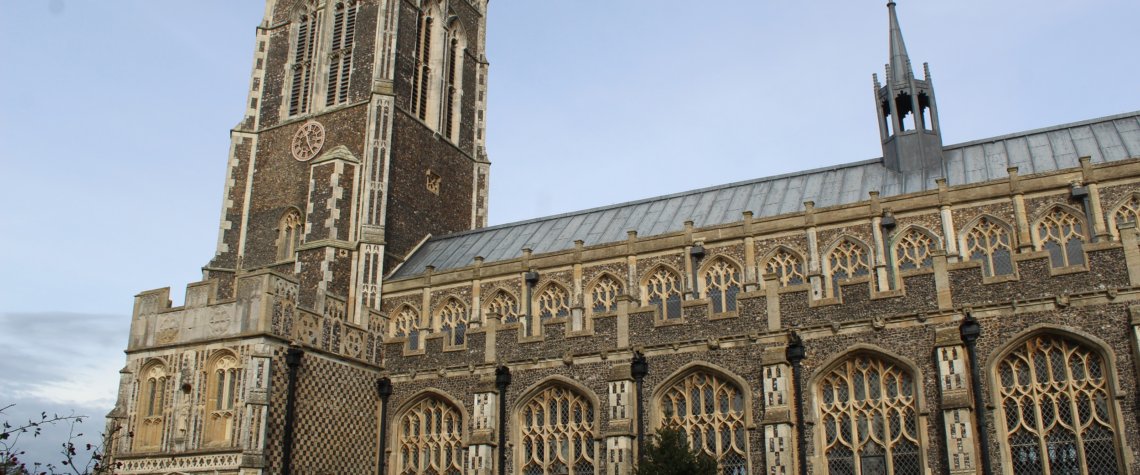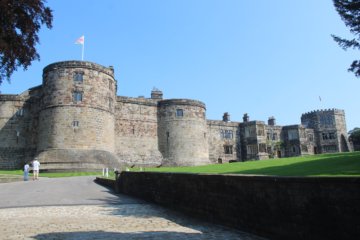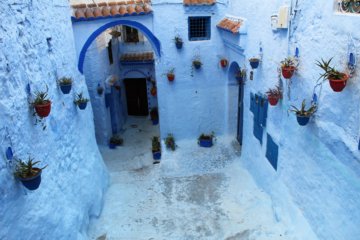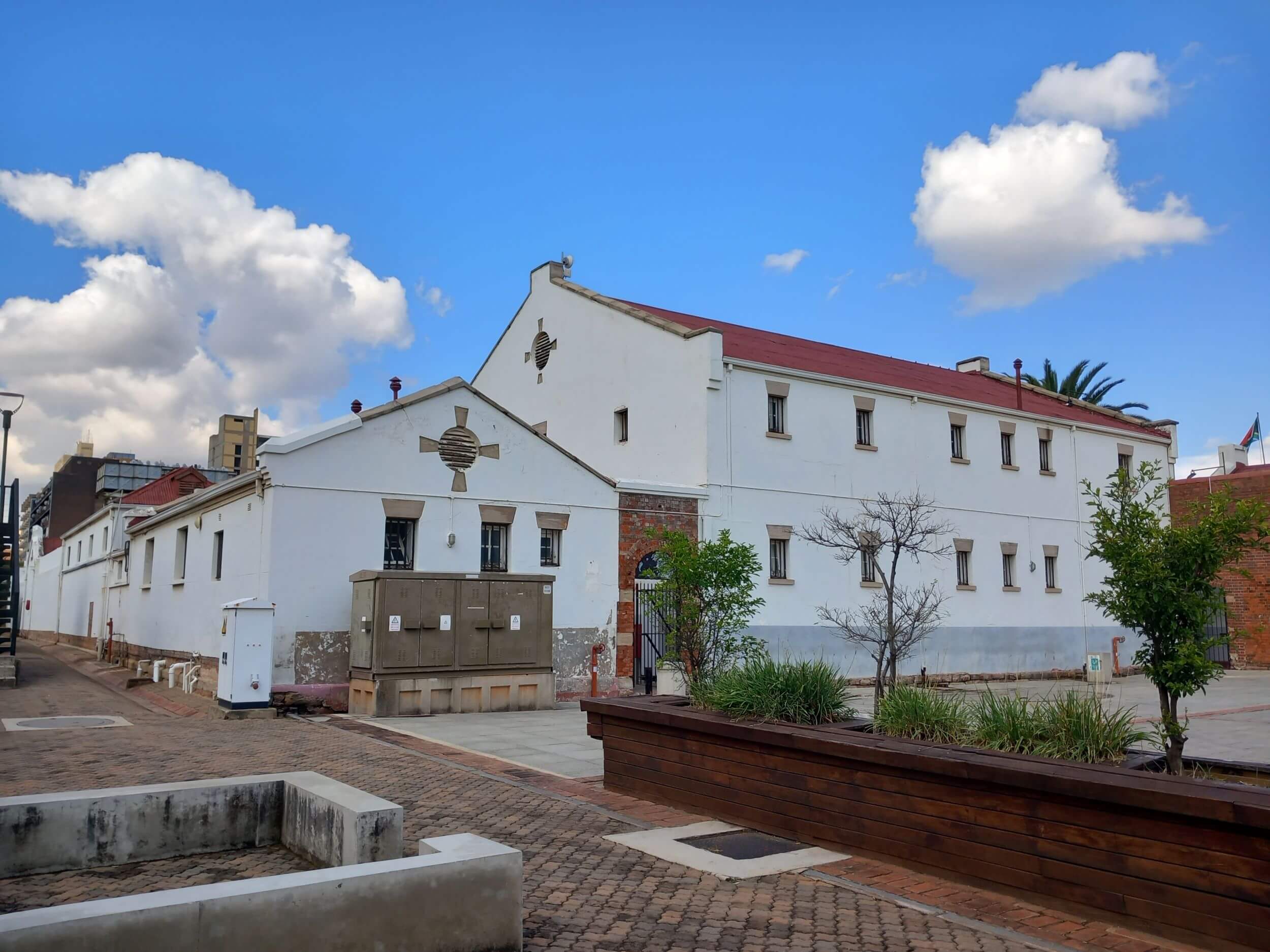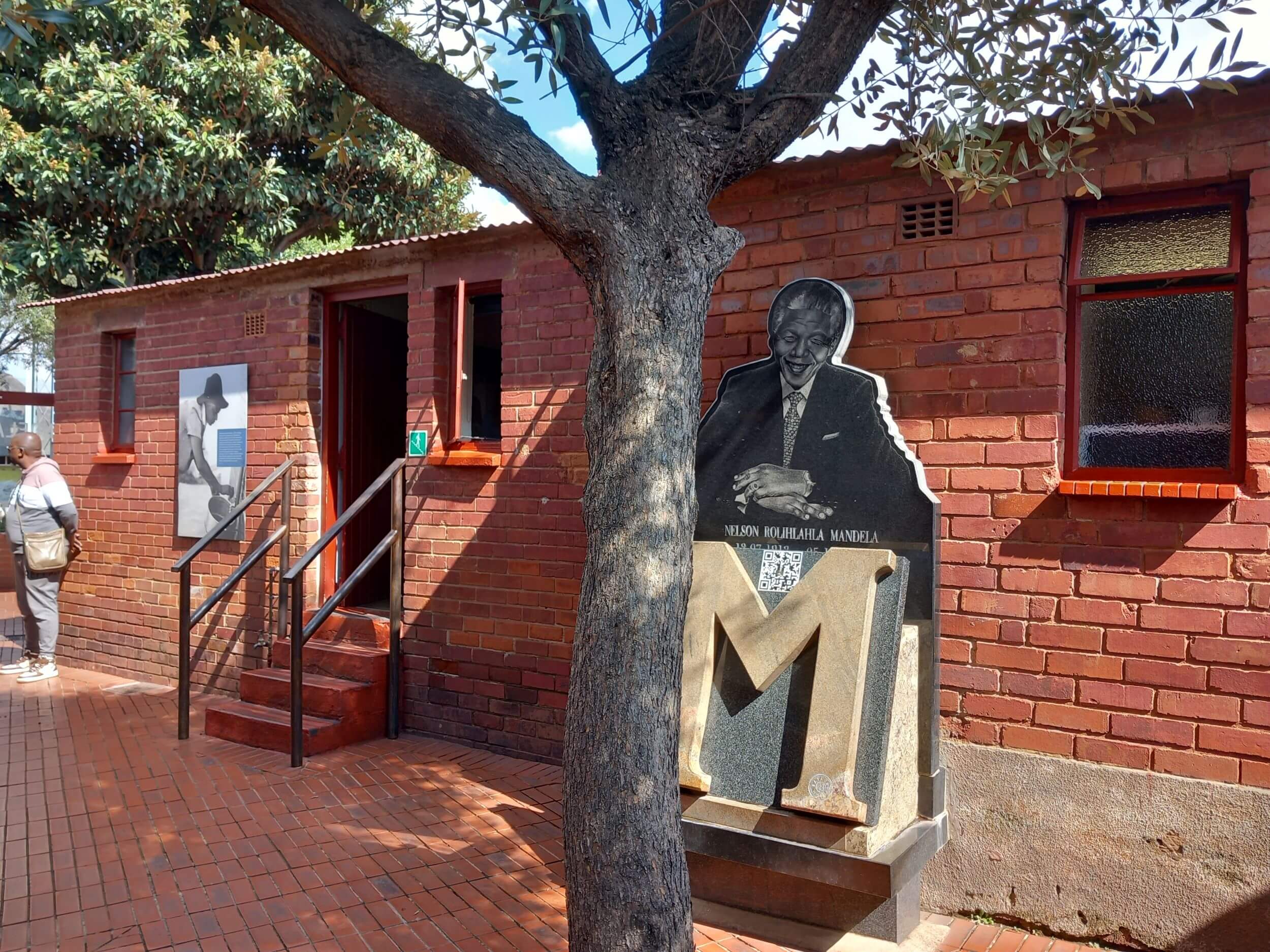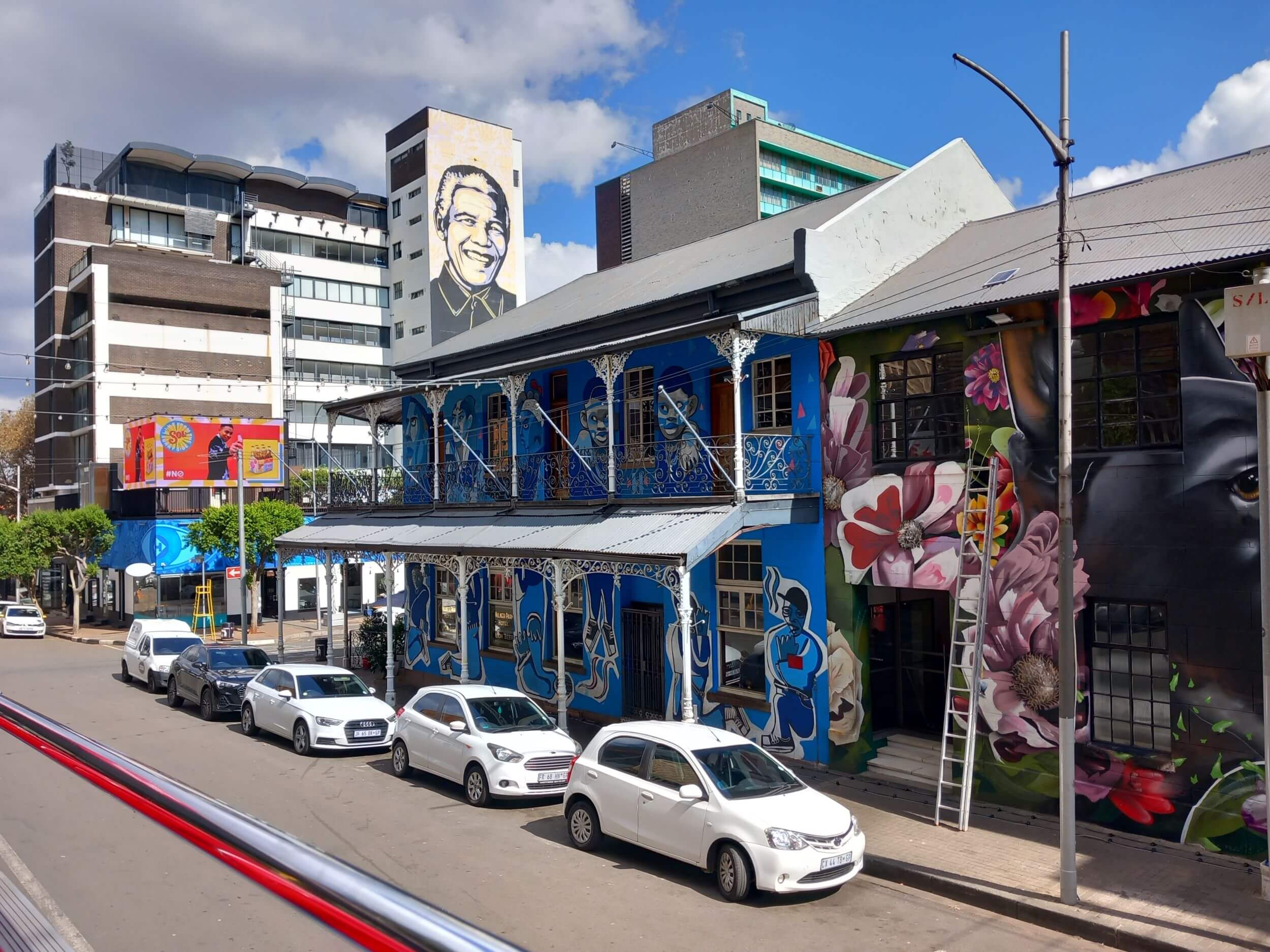During our trip around Norfolk and Suffolk in our campervan, Bertha, we spent a lovely week in the pretty coastal town of Southwold. One morning, I ventured out alone to explore the impressive parish church of St Edmund. Luckily for me, the church was open. I was the only visitor. A very pleasant and knowledgeable volunteer was on hand to answer my questions as I wandered around. He also advised me on the best spot to get a fantastic photo of the church in all its glory.
Read on to discover what makes the Church of St Edmund King and Martyr (to give it its full title!) in Southwold so special. Indeed, experts rank it amongst the finest ecclesiastical buildings in eastern England.
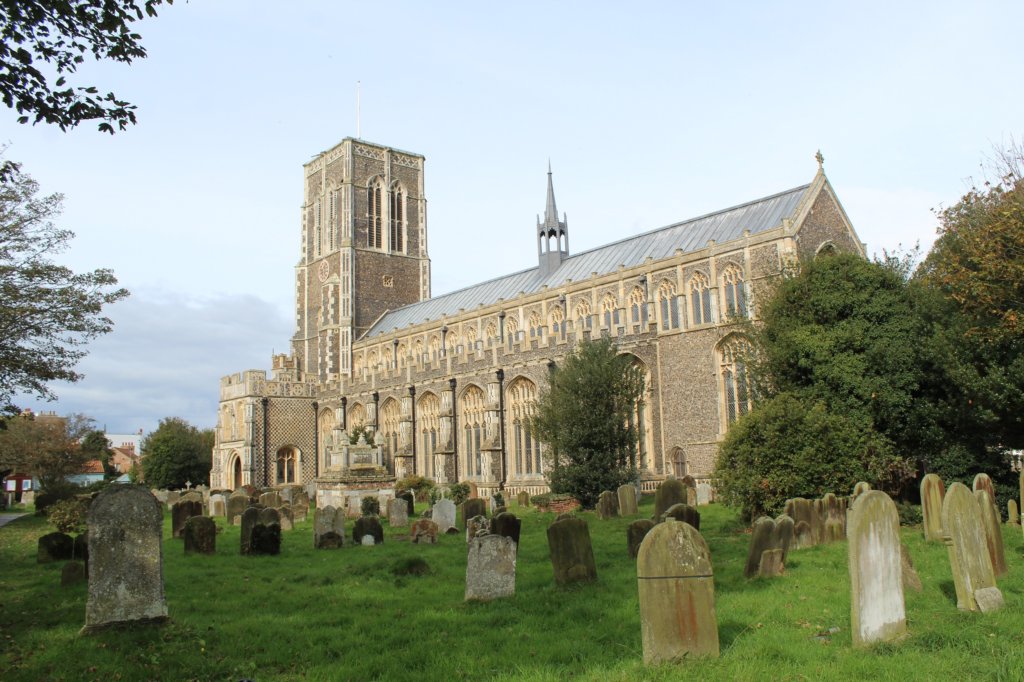
In this article
Who Was St Edmund?
The St Edmund referred to in the name of the church became King of East Anglia in the year 856AD. He was only 15 years of age but was already a devout Christian. At this time, the Danes were ravaging the area. Edmund fought them bravely, but he and his men were defeated in 870AD.
The king was taken prisoner by the Danes. They offered that he could remain king under the direction of the Viking overlords. Edmund refused to submit to pagans so he was tied to a tree, whipped, shot through with arrows, and then beheaded. A stone statue of Edmund bound with ropes was erected above the entrance to the church in 1989.
After his death, supporters took Edmund’s remains to Bury St Edmunds. In the 11th and 12th centuries, a great Benedictine abbey was built there to house the saint’s (by this time, Edmund had been beatified) shrine. It was an important place of pilgrimage, bringing fame and wealth to the entire area.
St Edmund was regarded as England’s patron saint until he was gradually replaced by St George in the late Middle Ages.
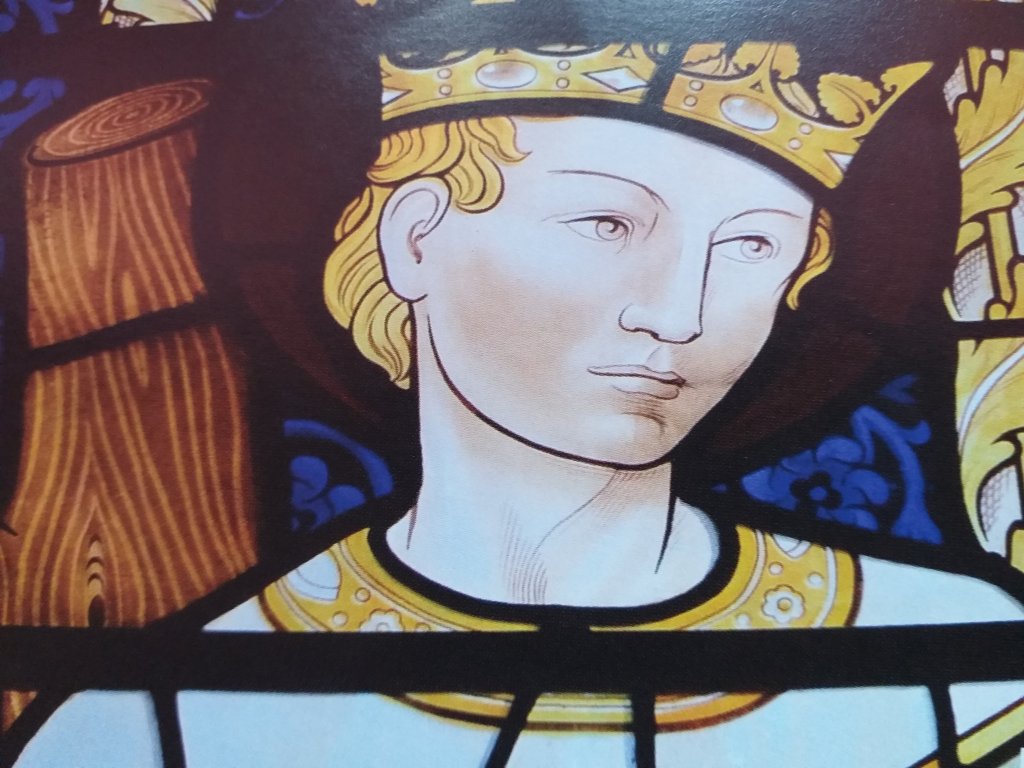
The History of the Church of St Edmund
Early History
Until 1200, there was no church in Southwold. The fishermen who lived there had to go to St Margaret’s in Reydon to worship. Then, in 1202, the Pope decreed that Southwold should have at least a chapel for daily mass. The abbot and monks of the great Benedictine Abbey in Bury were the lords of the manor. They had to provide the land the new chapel would be built on in return for it being placed under the patronage of St Edmund, the martyred king whose bones lay buried in their house.
Two hundred years later, the first church of St Edmund burned to the ground. No trace of it remains above ground, but its foundations were discovered in 1758. These indicated that the original chapel was about half the length of the present church.
Rebuilding the Church of St Edmund
The church of St Edmund was rebuilt entirely in the striking Perpendicular style, (described in my article about English churches) with its emphasis on vertical lines rather than the curves of the decorated period.
No expense was spared, despite there being no resident lord to fund the project. Local merchants, ship owners, fishermen, and humble villagers all contributed. Land, ships, and houses were sold to pay for the rebuilding and refurnishing of the church of St Edmund.
The swan and ermine badges of Henry IV and his queen are carved into the stonework of the south sanctuary window. This reliably dates the present church to before 1413. Henry IV inherited the title of lord of the manor of Southwold and likely contributed to the rebuilding costs.
By the time the new church was completed in 1500, the overwhelming impression for anyone entering would have been of vivid colour throughout the interior. There were highly decorative images painted on every surface, whether they be made of wood, glass, or stone. Few vestiges remain of these features.
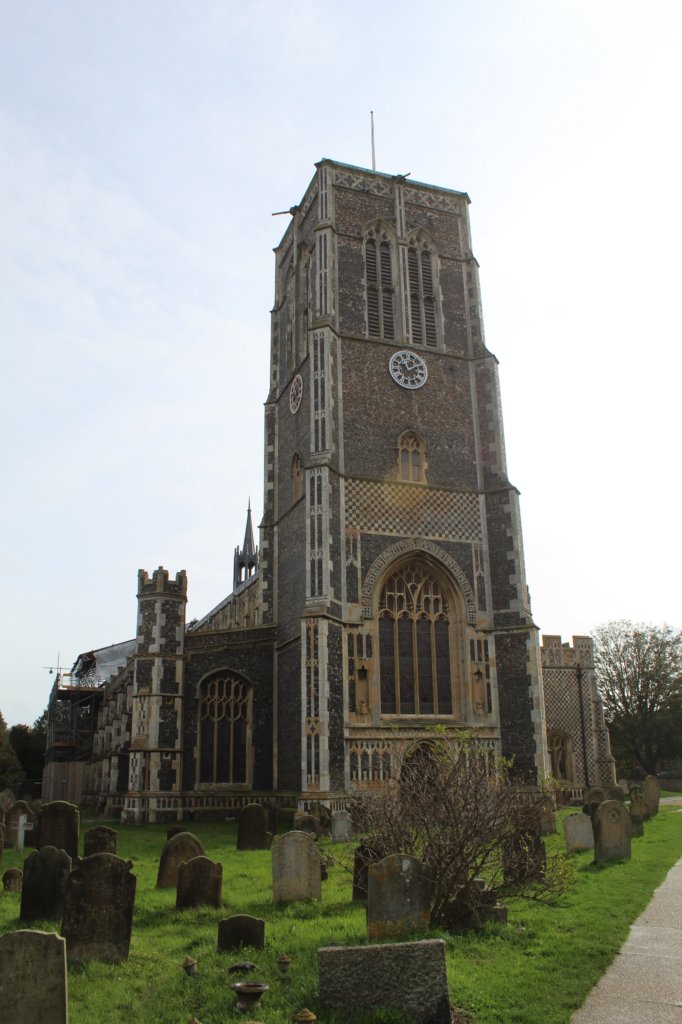
St Edmund’s During the Reformation
The break with Rome during Henry VIII’s reign led to the asset-stripping of the vast majority of England’s churches and abbeys. At the church of St Edmund, the exterior remained untouched, but silver chalices and ornate gilded vestments were stolen and sold. Images and elaborate carvings were removed. The money raised was used to pay for repairs to the bridge and harbour and for the hire of soldiers and the purchase of gunpowder. Secular needs took priority over spiritual ones.
Puritanism
By the mid-seventeenth century, under the governance of Lord Protector, Oliver Cromwell, puritanism had a firm hold on English society. Like most of East Anglia, Southwold was strongly Puritan. Local man, William Dowsing, was appointed as ‘Commissioner for the destruction of monuments of idolatry and superstition’. In this capacity, he visited the church of St Edmund and oversaw the tearing down of any ornamentation that had survived the Reformation. This included 130 superstitious pictures, 4 crosses, 13 cherubims, 20 angels, and the ornate cover of the font. He also got rid of the bells and replaced the pews with enclosed boxes.
At roughly the same time, though the records don’t show why, the church’s stunning windows were bricked up for half their height and the noble proportions of the tower arch were destroyed by the erection of a clumsy wooden gallery. Darkness had taken over from light.
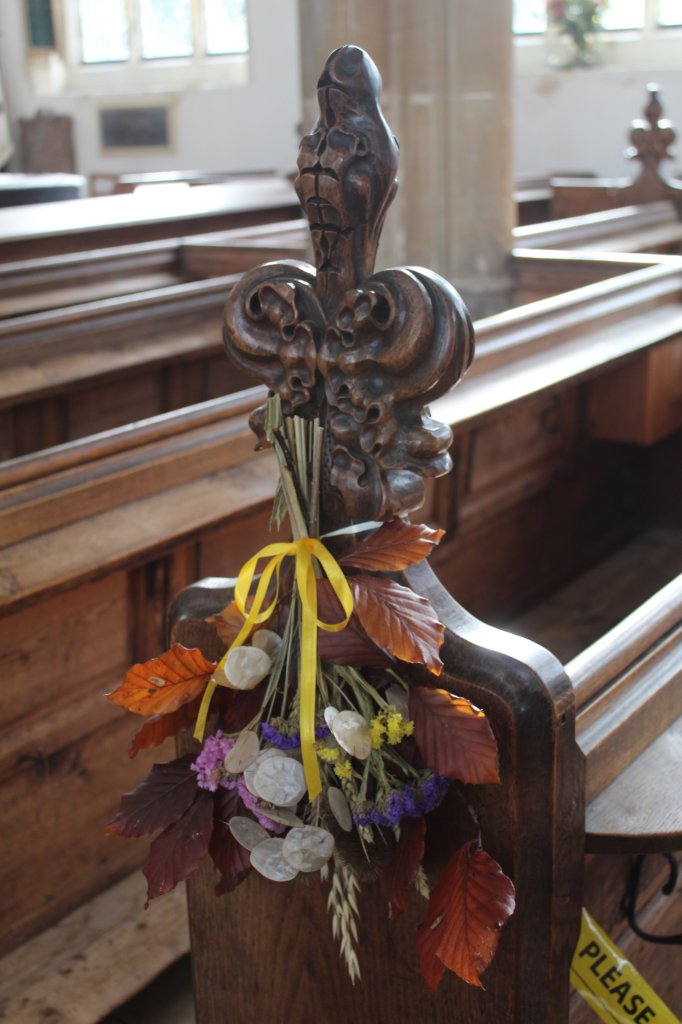
St Edmund’s in the Nineteenth Century
By 1799, the Church of England was at a low ebb. Many of its churches had fallen into disrepair as its congregations turned increasingly to nonconformist religions. There were Methodist and Independent chapels in Southwold. The Anglican response to this was the Evangelical movement.
At the church of St Edmund, this coincided with the arrival of patrons who were genuinely interested in the building and its people. Rous Birch became the first vicar for centuries to actually live in Southwold. He oversaw the repair of the church, especially the chancel. This led to a local grocer presenting St Edmund’s with its first organ. Soon after, a new east window was installed and the ceiling was repainted.
Extra seating was needed for a growing congregation. In 1836, local people paid for a new gallery under the tower arch to accommodate the town’s children during services. By 1850, the box pews had been replaced by the open benches you can still see today. Repairs and restoration work continued apace for the next fifty years or so.
The Church of St Edmund Today
Today, the grade 1 listed church of St Edmund dominates Southwold and its approaches. The 30-metre-tall tower is visible from miles around. Up close, the 49-metre-long building is really impressive.
Much of the interior is the work of a young church architect, F E Howard from Oxford. He restored, repaired, created, or redesigned everything from the font to the reredos, the lectern, the pulpit, and the hymn boards. Sadly, he died before all the work was completed.
The church today supports a large and active congregation.
The Exterior
There’s no doubt that the church of St Edmund looks stunning. East Anglia has no quarried stone so the limestone on the outside came from Yorkshire and Derbyshire. The combination of dark flint with white stone and glittering glass framed within the majestic straight lines of the large perpendicular church takes your breath away. The inlaid chessboard patterning above the tower window and the panelling on either side of the doorway are striking features. The long green copper-covered roof sets off the light stonework perfectly.
As I walked around, I overheard someone saying that the tower looked unfinished. I didn’t agree, but I asked the guide if there had ever been a spire on top. He told me that spires and highly decorative parapets are not common in East Anglia.
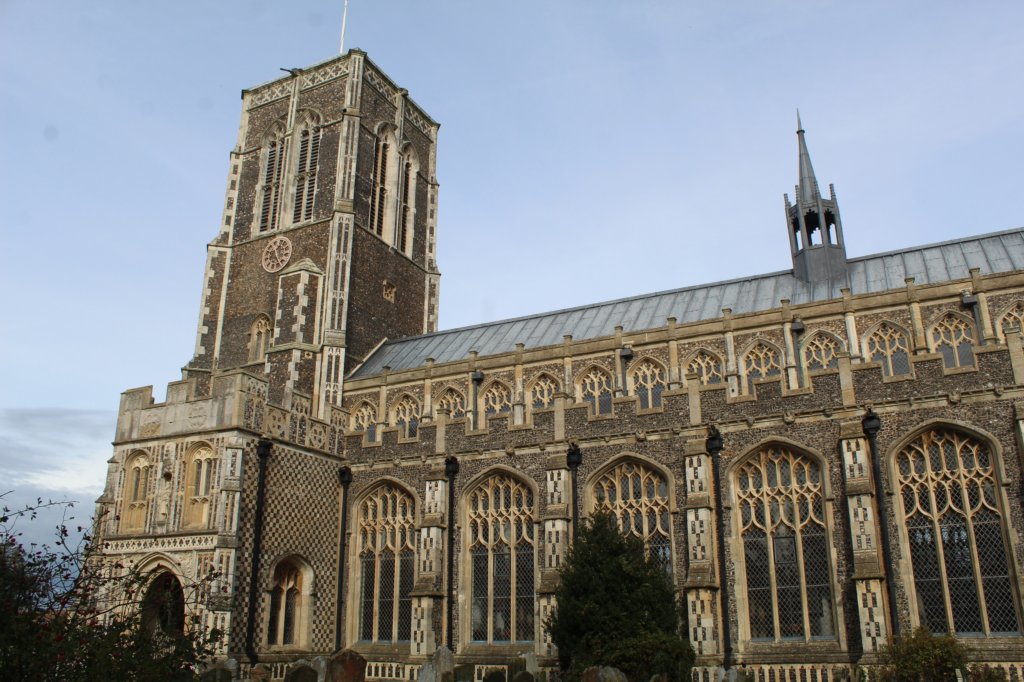
The Interior
When you step inside the church of St Edmund, there’s a real wow factor. The superbly proportioned nave with its spectacular ceiling is glorious. There are many features to take note of as you walk around. Here, I’ll describe just a few of them.
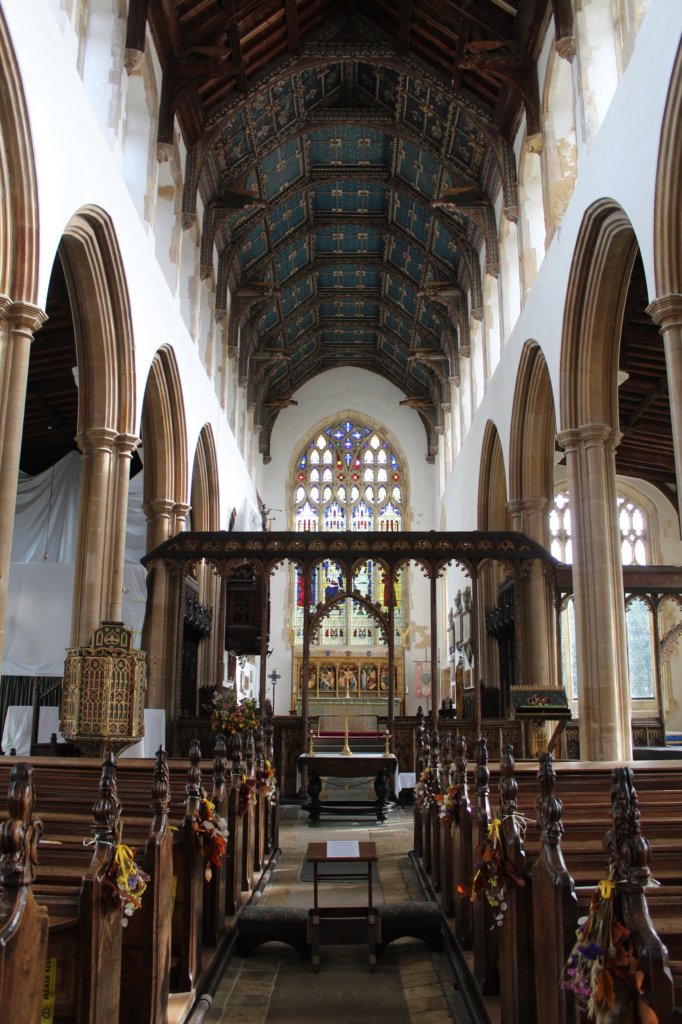
The Font
The font is of an ornate type produced at the end of the Middle Ages which was unique to East Anglia. Originally, it would have had seven painted and carved panels depicting the seven sacraments – baptism, confirmation, mass, penance, extreme unction, ordination, and marriage. These, along with the medieval steps for the priest and godparents and the stunning cover, were removed by Dowsing in 1643. F E Howard designed replacements for these features. The cover you see today is his work. It is 7.3 metres tall, the tallest in the whole of England.
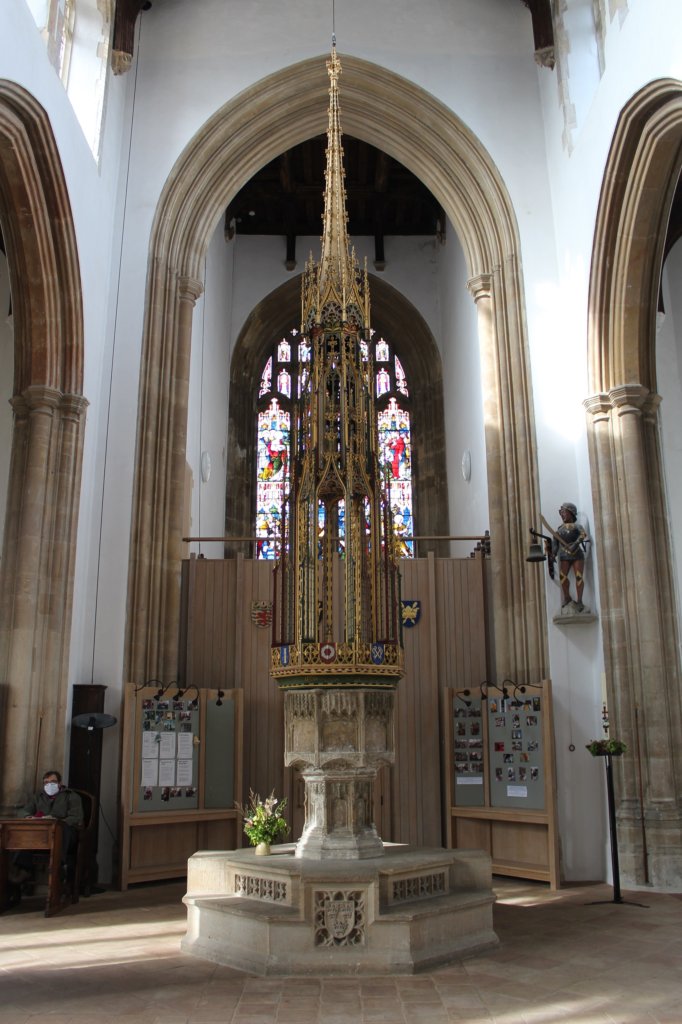
The Pulpit
The trumpet-stemmed pulpit in the church of St Edmund is one of the few pre-Reformation examples found in England today. It is richly coloured and eye-catching. Unfortunately, this owes more to the over-restoration done in 1928 than how it would have looked originally.
The Rood Screen
The medieval rood screen is one of the most highly-regarded of its kind in the country. The painted panels at the bottom depict the apostles and angels. Their faces were all destroyed during the puritan era, but many of them were sympathetically restored in 1874 by Sir George Richmond’.
The East Window
The great east window above the high altar is the last work of Sir Ninian Comper, an architect who specialised in stained glass and church furnishings. He fulfilled many ecclesiastical commissions throughout the UK and, in 1950, was knighted by George VI. When he died ten years later, his ashes were buried beneath the window he designed in Westminster Abbey.
The window replaced one which was blown out when a bomb fell nearby in 1943. It depicts the young Edmund on trial before the Danish king, his martyrdom, and his rising in glory. It was dedicated by Princess Mary, the Princess Royal, in 1954.
During my visit, because of covid restrictions, I couldn’t get close to the window. The best view I had was the one shown in the photo of the church’s interior above.
Southwold Jack
The figure of Southwold Jack is well known to anyone who loves Adnams beers as he was adopted as their trademark in the early twentieth century.
The original Southwold Jack, though. (also named Jack the Smiter) is a 15th-century clock jack that has been repurposed to ring a bell at the church of St Edmund. The charming wooden figure stands just under 4.5 feet tall. He’s dressed like a soldier from the Wars of the Roses and clutches a sword and a battle axe in his hands. At the start of each church service, or to announce the arrival of a bride at her wedding, he swings his axe and strikes a small bell.
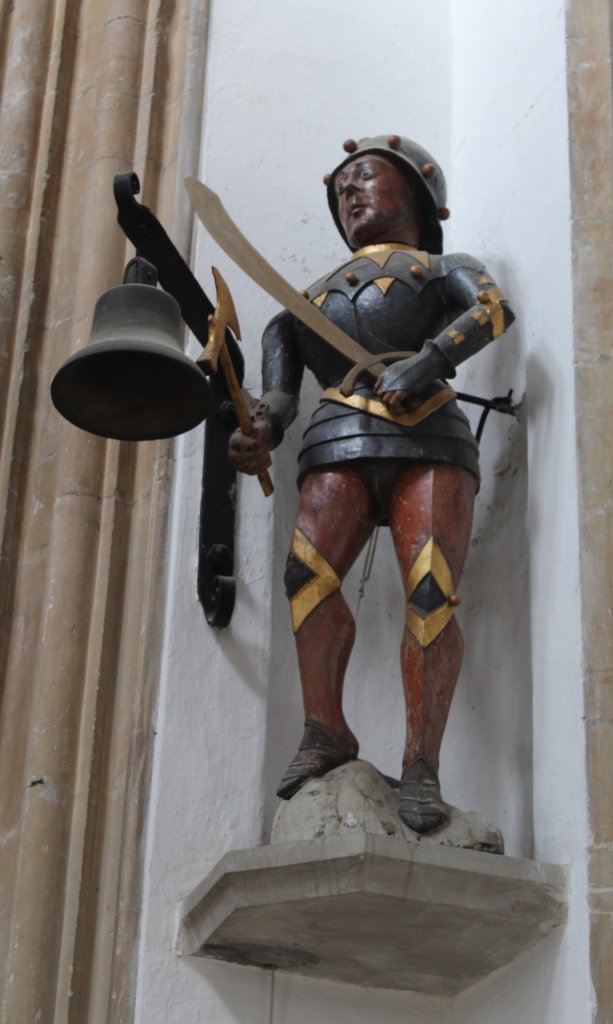
The Graveyard
The churchyard at St Edmund’s is full of interesting stones. Call me weird, but I spent a very enjoyable hour wandering around reading the epitaphs!
I particularly like this memorial to thirteen-year-old Jane Eliza Palmer, erected by her parents. The poem reads:
When we see our precious darling
That we tended with such care
Quickly taken from our bosom
How our aching hearts despair
Round her little grave we linger
Till the setting sun is low
Feeling all our hopes have perished
With the flower we cherished so
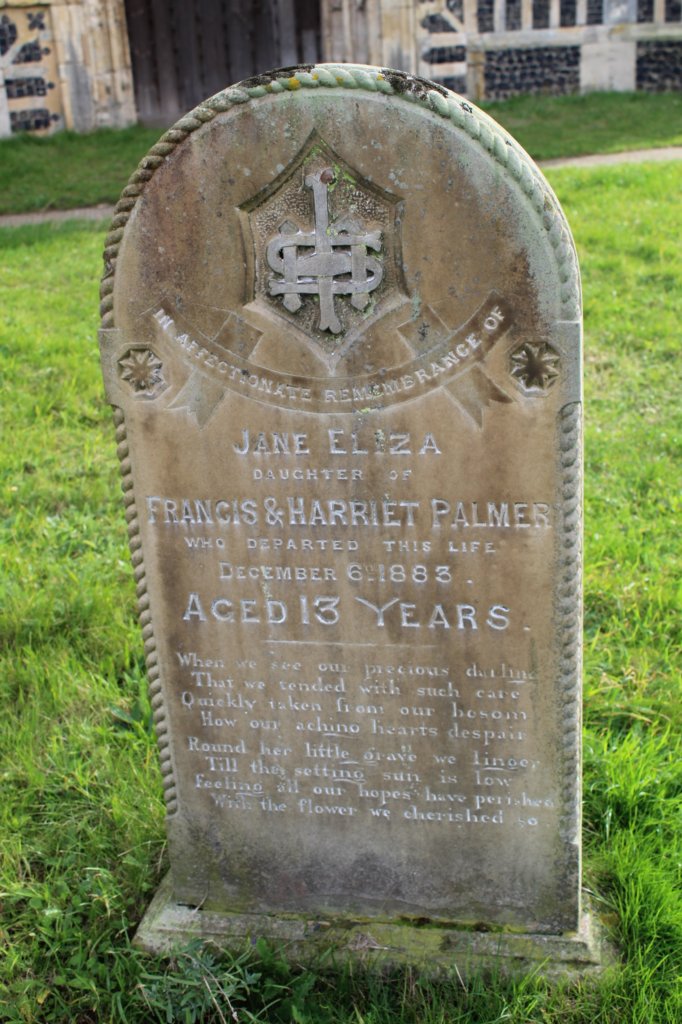
If you like what you’ve read, PIN IT!!
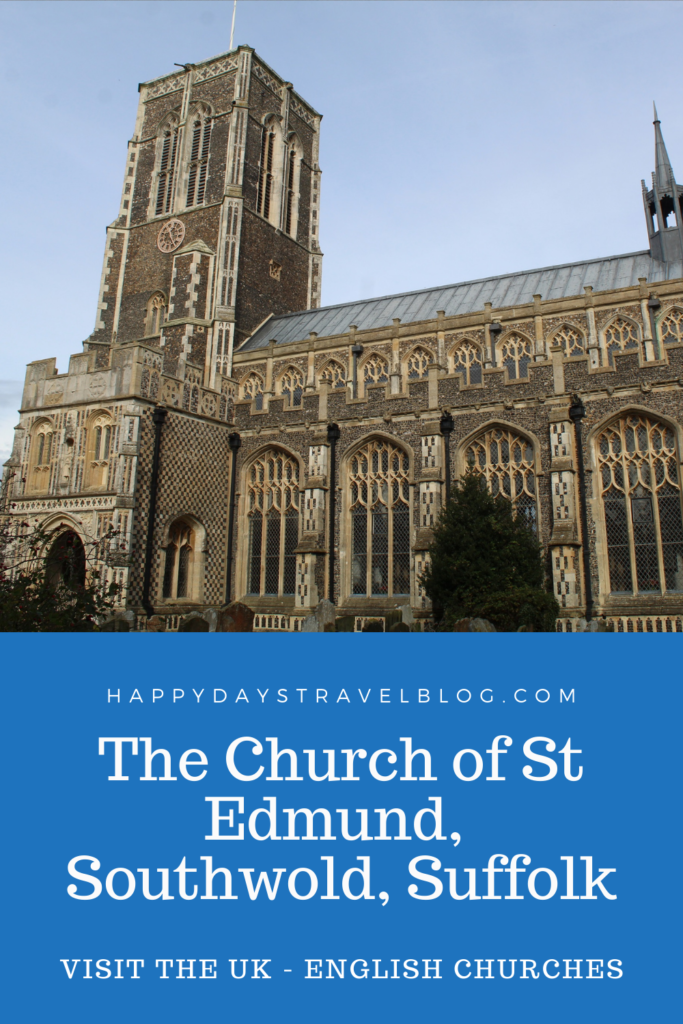
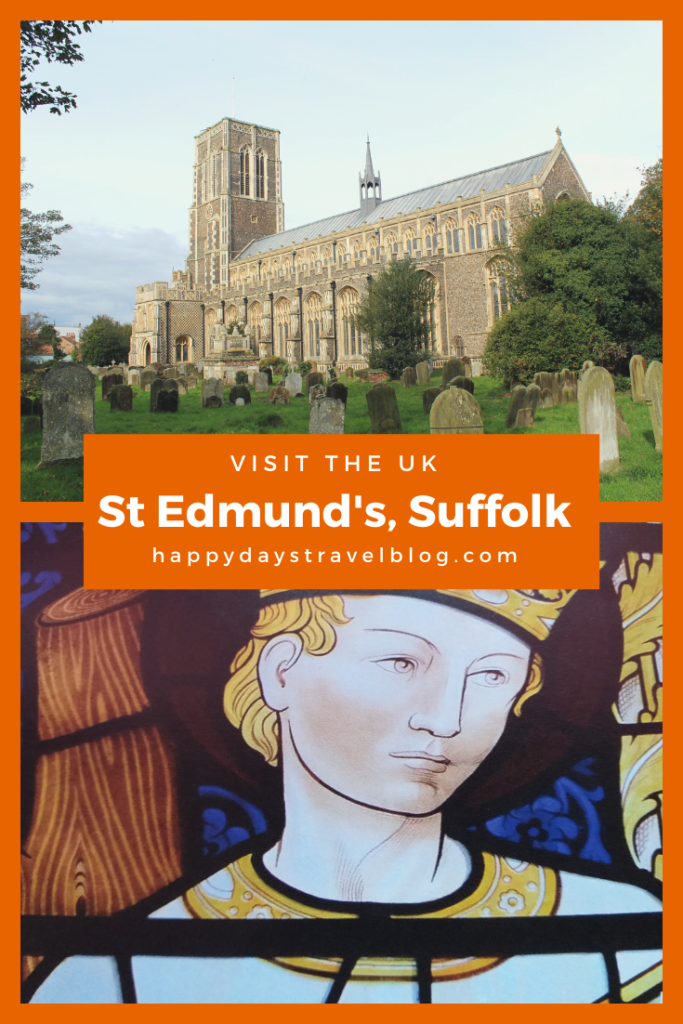
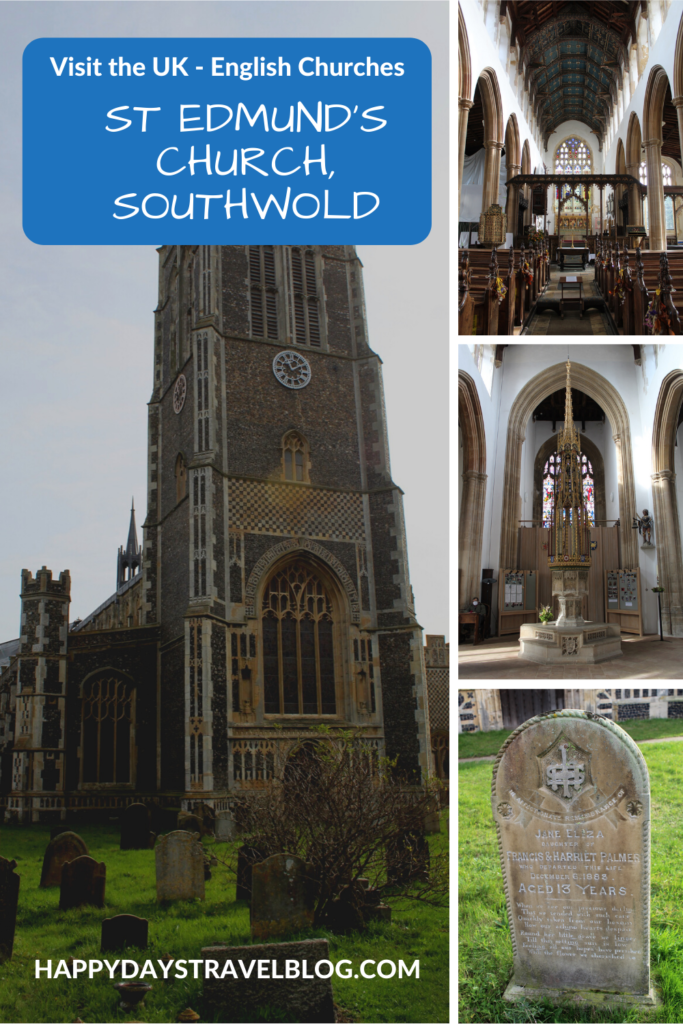
If you’re travelling soon, please use these links!
Are you travelling soon? Use these links when making your bookings. These are the companies we use. It won’t cost you any extra, but we will earn a few pennies to help keep Happy Days Travel Blog going. Thank you!!
- Book your travel insurance with World Nomads. If you are a digital nomad or long-term traveller, try the specialist provider SafetyWing. (Never leave home without protecting yourself, your trip and your belongings!)
- Book your flight with Skyscanner
- Book your accommodation with Booking.com
- Book a tour with Tour Radar
- Book city tours and activities with Viator or Get Your Guide
- Check out our Resource Page for more companies we recommend.
Disclosure: This post contains affiliate links. If you click through for more information, or to make a purchase, it may result in a small commission coming my way. Please note that there is no extra cost to you associated with this. Thank you so much for supporting my site.
Join our mailing list

Sign up to receive our monthly newsletter. Keep up with what we're doing and be the first to receive special offers and insider tips.

